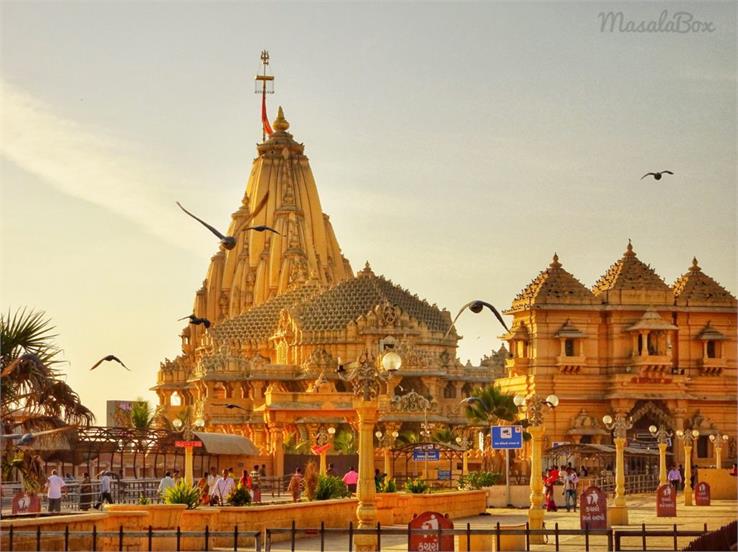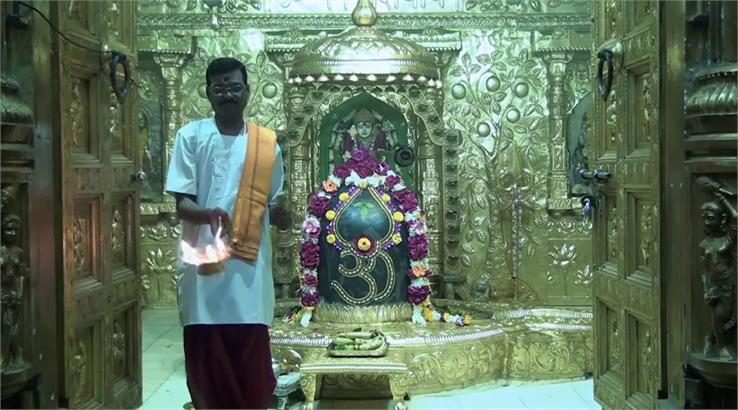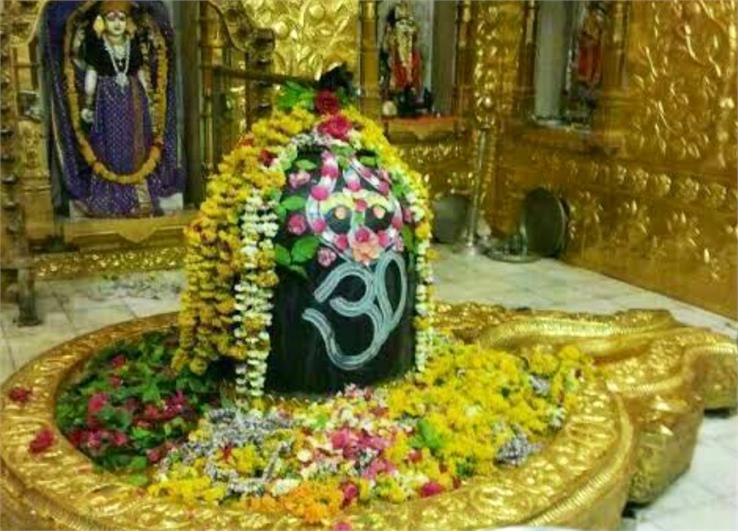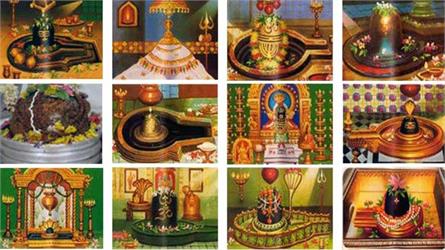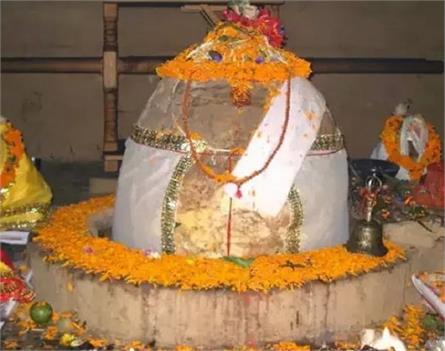Somnath Jyotirlinga - The Revered Abode of Lord Shiva

There are 12 Jyotirlingas of Lord Shiva established at different places in India, by whose visit people's wishes are fulfilled, sorrows go away, and wealth, splendour, and fame are attained. According to mythological beliefs, a person who chants the names of these 12 Jyotirlingas daily becomes free from all sufferings, and all his sins are destroyed. The names of these Jyotirlingas are chanted for the fulfilment of wishes.
Somnath Jyotirlinga is the first jyotirlinga of the 12 jyotirlingas. Nestled along the serene coastline of Gujarat, India, lies Somnath Jyotirlinga, one of Hindus' most revered pilgrimage sites. This sacred temple holds great significance as one of the twelve Jyotirlingas, the divine abodes of Lord Shiva. With its glorious past and enduring spiritual legacy, Somnath Jyotirlinga continues to draw countless devotees and curious visitors worldwide.
Somnath Jyotirlinga stands as a symbol of divine strength, resilience, and unwavering faith. Its historical and spiritual significance and architectural grandeur continue to captivate the hearts of devotees and visitors alike. A pilgrimage to Somnath is an experience that transcends religious boundaries, inviting individuals to connect with their inner selves and witness the power of faith in an enchanting setting.
History of The Somnath Temple
The history of the Somnath Temple is a saga of resilience and faith. Believed to be one of India's oldest and most sacred pilgrimage sites, the temple has faced numerous invasions and destructions. The first recorded invasion occurred in the 11th century when Mahmud of Ghazni looted its wealth. It had rebuilt, only to face further attacks by Alauddin Khilji and other rulers. The present-day temple, completed in 1951, stands as a symbol of India's indomitable spirit. It attracts devotees and visitors worldwide, who come to seek Lord Shiva's blessings and witness this iconic temple's rich cultural heritage and architectural grandeur. The history of the Somnath Temple exemplifies the endurance of faith and the power of devotion against all odds.
Also Read: Kedarnath Temple Jyotirlinga
Temple Architecture
The architecture of Somnath Jyotirlinga showcases a blend of various styles and influences, including Chalukya, Rajput, and Solanki. Reconstructed in 1951, the present-day temple is a magnificent example of intricate craftsmanship and grandeur. Its stunning design amalgamates classic Hindu temple architecture, featuring intricate carvings, exquisite domes, and towering shikhara (spires).
The temple complex also houses other significant structures, such as the majestic Nandi Mandapa (a pavilion with a statue of Nandi, Lord Shiva's sacred bull) and the Sabha Mandap, a spacious hall for gatherings and ceremonies. The evening's magnificent sound and light show narrate Somnath's historical and mythological saga, leaving visitors awe-inspired.
Also Read: Presence of Lord Shiva in Bijali Mahadev With Great Mystery
Legend
According to Hindu mythology, Daksha Prajapati, a great sage and progenitor of humanity, had twenty-seven daughters who were married to the Moon God, Chandra. Among these daughters, Rohini held a special place in Chandra's heart, which caused the other daughters to feel neglected and unhappy.
Daksha, concerned about the well-being of his other daughters, approached Chandra and advised him to treat all his wives equally. However, Chandra remained infatuated with Rohini, disregarding Daksha's plea. Frustrated by Chandra's refusal to change his ways, Daksha angrily cursed him.
As a result of the curse, Chandra began to lose his luminosity and slowly decayed. This decay affected the earth, causing stagnation of work and a pervasive atmosphere of sadness. Realizing the gravity of the situation, Chandra sought a solution to his predicament.
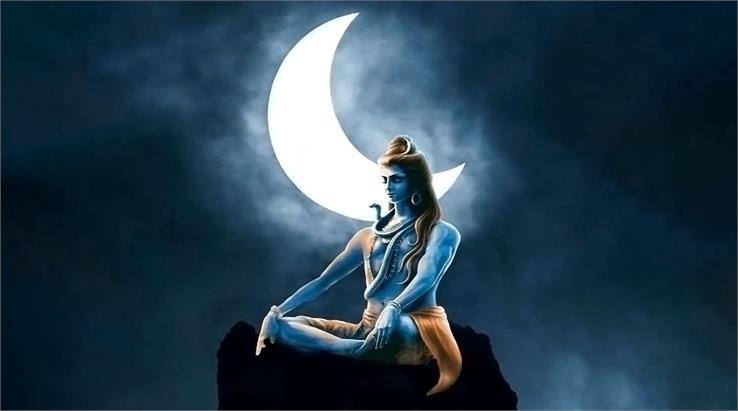
In his quest for redemption, Chandra turned to Lord Shiva, Lord Bholeshankar and embarked on an arduous penance. He chanted the powerful Mrityunjaya Mantra, the mantra of conquest over death, one hundred million times with unwavering devotion.
Pleased with Chandra's dedication and sincerity, Lord Shiva appeared before him and granted him a boon. Lord Shiva bestowed Chandra with immortality and protection from Daksha's curse. The curse resulted in Chandra's establishment of waxing and waning phases. His brightness would decrease gradually during the lunar cycle's dark side (Krishna Paksha). Still, it would increase during the bright side (Shukla Paksha), leading to a full moon every month and bringing happiness to all living beings.
Following this divine intervention, Chandra and other celestial deities expressed their gratitude by worshipping Lord Shiva in the form of Lord Mrityunjaya. According to popular belief, the temple stands at the spot where Lord Shiva appeared as a self-manifested lingam, an iconic symbol of his divine presence. The lingam at Somnath has been established by the Moon God, Chandra, to absolve himself of a curse. Thus, "Somnath," meaning "Lord of the Moon," was born.

The Somnath Jyotirlinga, enshrined within the temple, is believed to possess immense spiritual power. Devotees who visit and worship the Jyotirlinga at Somnath are said to be relieved of their accumulated sins from countless past lives. Somnath Jyotirlinga is a sacred pilgrimage site and a place of solace and divine grace.
The legend surrounding the construction of the Somnath Temple and Chandra's devotion to Lord Shiva underscores the importance of seeking divine intervention in times of distress and the transformative power of sincere penance and prayer.
Also Read: The Another Pilgrimage Site of Lord Shiva- “Manimahesh”
Religious Significance
Somnath Jyotirlinga holds immense religious and spiritual significance for devotees of Lord Shiva. A pilgrimage to this sacred site has believed to bestow blessings, fulfil desires, and purify the soul. Devotees from all walks of life embark on this spiritual journey, offering prayers, performing rituals, and seeking solace in the divine presence of Lord Shiva.
The Maha Shivaratri festival, celebrated with great enthusiasm at Somnath, is a special occasion attracting large numbers of devotees. During this auspicious festival, the temple comes alive with holy fervour as devotees engage in night-long vigils, chant sacred hymns, and participate in colourful processions.
Beyond the Spiritual Realm
Beyond its spiritual allure, Somnath Jyotirlinga also offers breathtaking natural beauty and a serene atmosphere. The temple is near the azure Arabian Sea, providing visitors with a tranquil environment for introspection and rejuvenation. The scenic beaches and nearby attractions, such as the Gir Forest National Park, further enhance the experience for those seeking a holistic journey.
Temple Timing
The Somnath Temple follows specific visit timings for devotees. The general visiting hours of the temple are as follows:
|
Morning |
6:00 AM to 7:00 AM |
Temple Opening and Mangla Aarti |
|
Morning |
7:00 AM to 12:30 PM |
Darshan (General Visiting Time) |
|
Afternoon |
12:30 PM to 1:00 PM |
Bhog Aarti |
|
Afternoon |
1:00 PM to 4:00 PM |
Temple remains closed for Bhog and Rajbhog preparations |
|
Evening |
4:00 PM to 7:00 PM |
Darshan (General Visiting Time) |
|
Evening |
7:00 PM to 7:30 PM |
Sandhya Aarti |
|
Evening |
7:30 PM to 8:00 PM |
Shringar Darshan |
It's essential to remember that during special occasions, festivals, and holy days, the timings might differ, and other ceremonies and rituals may occur. It is advisable to be aware of any specific timings or changes in the schedule during such times.
It is recommended to reach the temple a little early to avoid long queues and to allow ample time for a peaceful and meaningful darshan (sight) of the deity.
Also Read: Reason Behind Celebration of Shivratri
Preserving the Legacy
The reconstruction and preservation of Somnath Jyotirlinga stand as a remarkable testament to the indomitable spirit of the Indian people. Efforts safeguard the temple's heritage and ensure its continuity for future generations. The Somnath Trust, responsible for the temple's administration, has undertaken various initiatives to maintain the site's sanctity and provide essential amenities for pilgrims.
Fulfilment of Wishes
Visitors to the Somnath Temple often seeks various blessings and outcomes, such as:
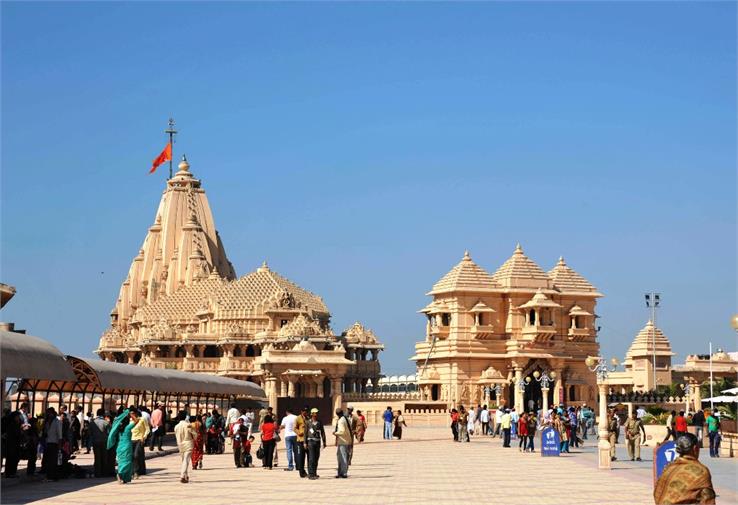
1 Spiritual Awakening
Many people visit the temple to deepen their spiritual connection and seek enlightenment. They aspire to experience a profound spiritual awakening and inner transformation.
2. Health and Well-being
Devotees may pray for good health and well-being for themselves and their loved ones. They seek blessings for physical, mental, and emotional healing.
3. Prosperity and Success
Some individuals seek blessings for financial prosperity, professional success, and overall prosperity in various aspects of life.
4. Removal of Obstacles
People may offer prayers at the temple to seek the removal of obstacles and challenges they are facing in their personal or professional lives.
5. Protection and Safety
Devotees may seek the protection and safety of themselves and their families from any harm or negative influences.
6. Liberation and Moksha
Many visitors aspire to spiritual liberation, and the ultimate goal of Moksha is liberation from the cycle of birth and death.
Also Read: Jageshwar Temple Dham The Penance Place of Lord Shiva in Uttrakhand
Significance
The worship of Jyotirlinga or Shivlinga holds significance both in scientific and spiritual aspects. Let's explore the reasons behind this practice:
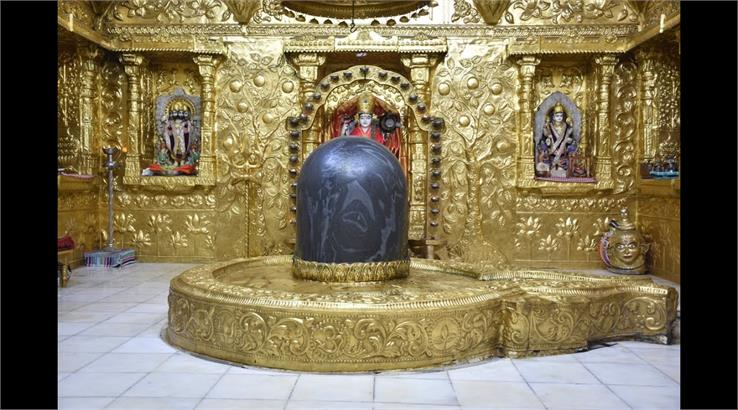
1. Symbol of the cosmic pillar of energy that sustains life and creation.
2. Signifying the harmony and interconnectedness of all existence.
3. Generate a positive aura that can purify the surrounding environment and uplift the energy levels of individuals present.
4. Help calm the mind, attain deep concentration, and experience spiritual transcendence.
5. Offering water, milk, or other sacred substances on the Shivlinga symbolizes the purification of one's thoughts, emotions, and actions.
6. It serves as a constant reminder to detach from worldly attachments and seek the eternal truth beyond materiality.
Best Time To Visit
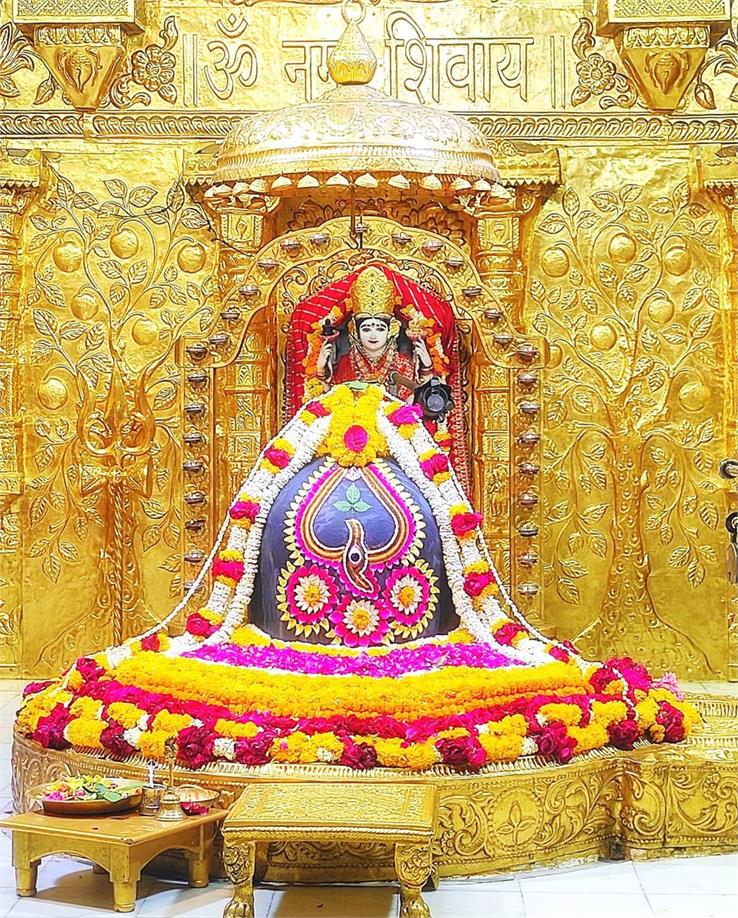
The best time to visit Somnath Jyotirlinga can vary based on personal preferences and factors such as weather conditions and crowd levels. However, there are a few considerations to keep in mind.
1. Winter Season (October to February): This is generally considered a favourable time to visit Somnath Jyotirlinga. The weather during this period is pleasant, with temperatures ranging from 15°C to 25°C (59°F to 77°F). It is a good time to explore the temple and its surroundings without extreme heat or humidity.
2. Festive Occasions: Somnath Jyotirlinga attracts many devotees during special festivals and auspicious occasions. The most prominent festival at Somnath is Mahashivratri, which usually falls between February and March. It is a highly revered time to visit and witness the grand celebrations in honour of Lord Shiva.
3. Avoid Monsoon Season (June to September): The monsoon season brings heavy rainfall to the region, making travel and temple visits challenging. Additionally, the temple may have restricted access or closures due to weather conditions. It is advisable to check weather forecasts and road conditions before planning a visit.
4. Weekdays and Non-Peak Hours: Visiting Somnath Jyotirlinga on weekdays or during non-peak hours is recommended to avoid large crowds. Early mornings and evenings are less crowded, providing a more serene and peaceful atmosphere for prayers and contemplation.
5. Plan in Advance: Regardless of the season, it is advisable to plan your visit, especially if you are travelling during popular festivals or holidays. Booking accommodation and transportation beforehand ensures a smoother and more enjoyable experience.
Hotels Near Somnath Temple
When choosing the best hotels near Somnath Temple in Gujarat, several options are known for their comfort, amenities, and proximity to the temple. Here are a few highly regarded hotels in the area:
1. The Fern Residency Somnath
This upscale hotel offers contemporary rooms, a multi-cuisine restaurant, a swimming pool, and a fitness centre. It is located just 3 kilometres from Somnath Temple, making it a convenient choice for travellers.
2. Lords Inn Somnath
Situated close to the temple, this hotel provides comfortable rooms, a rooftop restaurant, a swimming pool, and a spa. The property offers a blend of modern amenities and warm hospitality.
3. Hotel Ambar
Known for its excellent service and comfortable rooms, Hotel Ambar is located just 1 kilometre from the temple. It offers a restaurant, a 24-hour front desk, and free Wi-Fi for guests.
4. The Grand Daksh
This hotel is known for its spacious rooms, friendly staff, and convenient location. It is approximately 2 kilometres from the temple and features a restaurant and a garden.
5. Hotel Shubh Suvidha
Offering clean and comfortable rooms, this budget-friendly hotel is within walking distance of Somnath Temple. It provides basic amenities and is a popular choice among budget travelers.
How To Reach
To reach Somnath Temple, located in Gujarat, India, you can consider the following modes of transportation:
1. By Air
The nearest airport to Somnath is Diu Airport, approximately 80 kilometres away. You can hire a taxi or take a bus from the airport to get to Somnath Temple. Diu Airport is well-connected to major cities in India, including Mumbai and Ahmedabad, with regular flights.
2. By Train
The nearest railway station to Somnath Temple is Veraval Railway Station, which is well-connected to various cities in India. You can hire a taxi from Veraval or take a local bus to reach Somnath. Regular trains operate to Veraval from cities like Ahmedabad, Mumbai, Rajkot, and Dwarka.
3. By Road
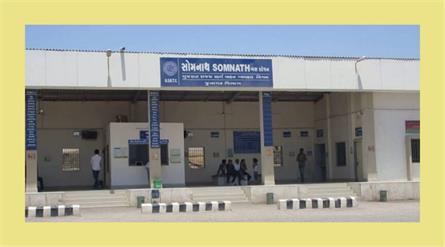
Somnath is well-connected, and you can reach the temple via private car, taxi, or bus. The temple is easily accessible from nearby cities like Ahmedabad (415 kilometres), Rajkot (190 kilometres), and Dwarka (235 kilometres) through well-maintained highways. You can also opt for state transport or private buses that ply regularly between Somnath and major cities in Gujarat.
Local Transportation Options:
Once you reach Somnath, local transportation options are available to reach the temple:
Taxis: Taxis are readily available for hire, and they can take you directly to Somnath Temple.
Auto-rickshaws: Auto-rickshaws are a popular mode of transportation within the town and can take you to the temple from various points in Somnath.
Walking: If you are staying in the vicinity, you can easily walk to the temple as it is centrally located.
It is advisable to plan your visit in advance, especially during peak seasons and festivals, to ensure a hassle-free experience.
How To Reach From Various Locations
Here is detailed information on how to reach Somnath Temple from various locations:
1. How to reach Somnath Temple from Ahmedabad
By Air: The nearest airport to Somnath Temple is Diu Airport, located approximately 80 kilometres away. From Ahmedabad, you can take a flight to Diu and then hire a taxi or take a bus to reach Somnath.
By Train: The nearest railway station to Somnath is Veraval Railway Station, which is well-connected to Ahmedabad. Trains from Ahmedabad to Veraval are available, and from Veraval, you can hire a taxi or take a local bus to reach Somnath Temple.
By Road: Somnath is well-connected to Ahmedabad by Road. You can hire a taxi or take a bus from Ahmedabad to reach Somnath. The distance between Ahmedabad and Somnath is approximately 415 kilometres, and the journey takes around 7-8 hours.
2. How to reach Somnath Temple from Rajkot
By Air: The nearest airport to Somnath Temple is Diu Airport, which is approximately 150 kilometres away from Rajkot. From Rajkot, you can take a flight to Diu and then hire a taxi or take a bus to reach Somnath.
By Train: Rajkot is well-connected to Veraval Railway Station, which is the nearest railway station to Somnath. Trains from Rajkot to Veraval are available, and from Veraval, you can hire a taxi or take a local bus to reach Somnath Temple.
By Road: Somnath is approximately 190 kilometres away from Rajkot by Road. You can hire a taxi or take a bus from Rajkot to reach Somnath. The journey takes around 4-5 hours.
3. How to reach Somnath Temple from Dwarka:
By Air: The nearest airport to Somnath is Diu Airport, located around 100 kilometres away from Dwarka. From Dwarka, you can take a flight to Diu and then hire a taxi or take a bus to reach Somnath.
By Train: Dwarka is well-connected to Veraval Railway Station, the nearest railway station to Somnath. Trains from Dwarka to Veraval are available, and from Veraval, you can hire a taxi or take a local bus to reach Somnath Temple.
By Road: Somnath is approximately 235 kilometres away from Dwarka by Road. You can hire a taxi or take a Dwarka bus to Somnath. The journey takes around 4-5 hours.


